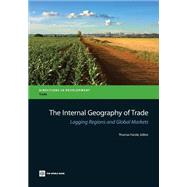The Internal Geography of Trade Lagging Regions and Global Markets
, by Farole, Thomas- ISBN: 9780821398937 | 0821398938
- Cover: Paperback
- Copyright: 4/20/2013
Over the past two decades, the rapid integration of many developing countries into global markets has contributed to a convergence of incomes across countries, pulling large economies like China, India, and Indonesia into the middle-income ranks. On the other hand, these same factors have contributed to widening income disparities within countries. One of the principal manifestations of these within country disparities is spatial, with growth accelerating in well located, typically metropolitan regions, while more peripheral regions fall further behind. The resulting pattern of leading and lagging regions matters not just for social and political cohesion, but also because the failure to integrate lagging regions may have a dampening effect on national growth, and contributes to the massive rural-urban shifts that are over whelming the infrastructural, environmental, and institutional capacities of metropolitan regions in many developing countries.
Using the World Bank’s World Development Report 2009 as its point of departure, this book – designed for policymakers, academics, and researchers – explores the nexus between trade and location to inform policies to address the challenge of lagging regions, with a particular focus on developing countries. The book combines empirical analysis with rich case studies in two of the largest and most dynamic developing countries – India and Indonesia. It provides unique evidence of how location shapes the participation and performance of individual firms in trade, through the business environment, agglomeration, market access, and institutional arrangements. It also provides a summary of decades of diverse (and largely unsuccessful) attempts to close the gap between leading and lagging regions, and sets out a series of policy recommendations to improve the efficacy of these efforts. At the heart of these policies is a focus on interventions targeted at two objectives: building the competitiveness of the region and its firms and improving its connectivity with domestic and international markets.







